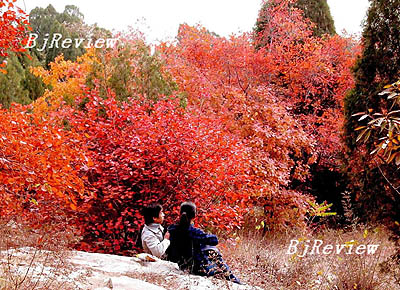|

Shijingshan District, regarded as a geographically auspicious district, will soon become the site of the Capital Recreation District.
The history of Shijingshan District, named after Shijingshan Hill, dates back at least 2,200 years. It occupies 86 square km, and the distance between the central area of the district and Tiananmen Square is 16 km.
Shijingshan Hill, rising just 184 meters above the sea level, looks out over a diverse industrial area of Beijing that includes the dykes built since the Yuan Dynasty (1271-1368) to prevent floods, Guanting Reservoir and a diversion channel, built in 1949, and Capital Iron and Steel Co. that rises in the southeast along the foothills.
Capital Iron and Steel Co. is an industrial icon in Beijing that has grown over almost 90 years. Its products are often chosen for use in key construction projects and national defense infrastructure, and are also exported to many countries around the world.
The industrial giant's days in Beijing are numbered though. It has reduced production in order to help Beijing reduce its air pollution ahead of the Olympic Games and will soon move to a new site 225 km from the capital. Despite its imminent exit from Beijing, many memories of the factory will remain in the form of protected buildings and a cultural and creative industrial zone that will be set up on its former site.
At the junction of Shijingshan District and Haidian District lies Cuiwei Hill. Compared to the hill, people are more familiar with Badachu Park, which is located at the south of the foothill. The park is famous for eight well-preserved monasteries. In the second monastery, Lingguang Temple, there is a tower which enshrines a tooth of the Buddha Sakyamuni and attracts Buddhists from all over the world.
The district's transport links are very convenient. The No.1 Line Subway passes through the area. Getting off at Bajiao Station by subway, you can go directly to an amusement park, which occupies 340,000 square km. From the same station it is an 8-minute walk north to the Laoshan Velodrome, an Olympic venue.
Another Olympic venue, the Beijing Shooting Range, is also located in the district. The inspiration of the range's design comes from forest hunting, where modern sport of shooting originates. The "ecological breathing walls" of the range automatically control the ventilation of the entire building and create a comfortable and healthy environment. The venue will host 10 Olympic events, including pistol and rifle prone, and will see the first medals of the Beijing Olympics awarded. | 